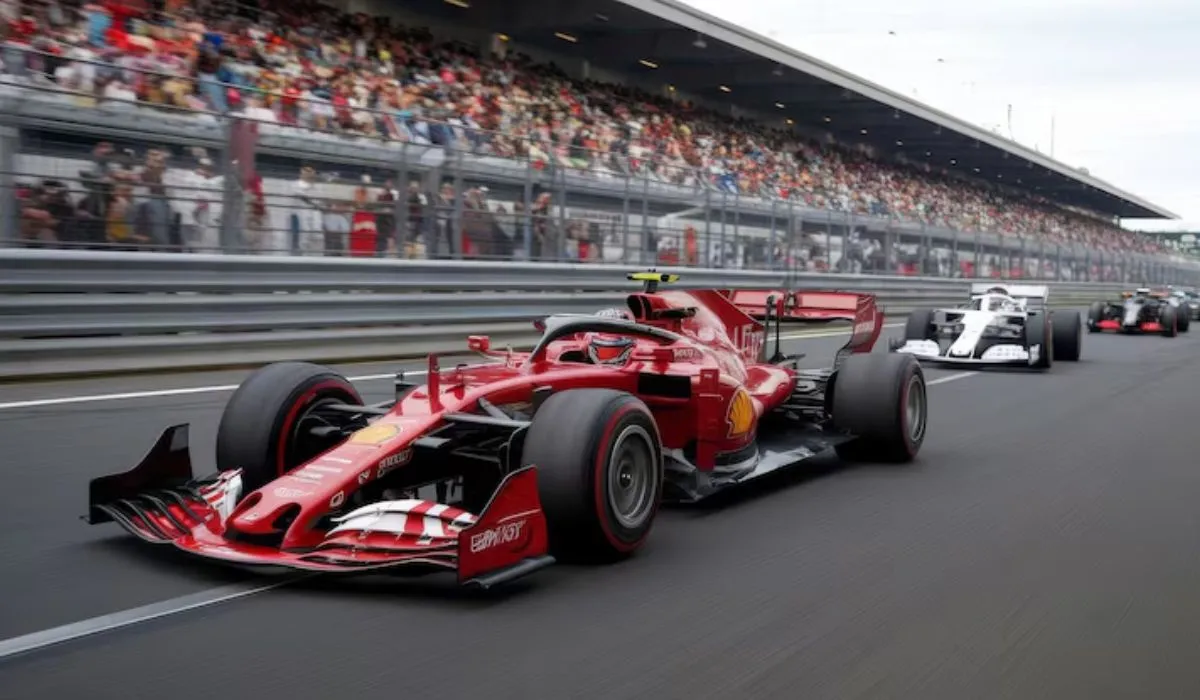Formula 1 claims it has decreased its carbon footprint by 13% between 2018 and 2022 on its drive to halve its emissions by 2030 continues in spite of its expansion.
F1's Net Zero by 2030 effort seeks to eliminate 50% of absolute carbon emissions compared to its 2018 baseline, which comprises the energy usage at its facilities, F1's racing events and all the travel and logistics in between.
It undertakes to put a viable offset mechanism in place for the balance of its emissions.
While the complete suite of statistics on 2023 is not available yet, F1's newest impact report touts a 13% drop between 2018 and 2022, while describing the series' latest attempts to assist accomplish that target.
In previous year's report, which did not cover 2022, F1 reported a drop of 17%. The 2022 season included one extra race than in 2021.
Last year, the schedule was also consisted of 22 events, while 2024 offers a record-breaking 24 grands prix.
In 2022, F1 stated its travel and logistical footprint was 72% of its baseline footprint. It currently argues the logistical challenge of holding a 24-race schedule implies that region represents 49% of its footprint.
The series claims it has various steps ongoing to lessen the consequences of its growth.

Following the change to more efficient Boeing 777F cargo planes, its logistics partner DHL has converted to a new fleet of 18 trucks powered by drop-in biofuel to minimize emissions throughout the calendar's nine European races.
Restructuring the foreign schedule is also a crucial aspect of further optimizing logistics. And although still a work in progress, shifting the Japanese Grand Prix to its new spring schedule is thought to be one of the adjustments helping to improve the movement of freight from Australia and China to following editions.
"The reason that's important is because the calendar reflects our current freight model, which is where the majority of emissions are due to air freight that travels point to point," explained Ellen Jones, F1's Head of Energy, Sustainability and Governance.
"When you can reduce those distances, you can reduce your carbon footprint, in addition to the technological innovation that we can then support, such as biofuels and trucks, and sustainable aviation fuel in the future."
F1 has further come up with strategies to decrease the amount of freight and manpower needed at races, instead strengthening its remote capabilities.
"The transition to renewable energy both at home and away is really critical for us and is really driven the first 13% in terms of our reductions," added Jones.
"Within the 2022 numbers, that's generated a 56% drop in emissions across companies and sites. To be accounted in 2023 and beyond, you can also start to see how we're switching to renewable energy outside of the UK."
Last year, F1 experimented renewable power generators operating on biofuel and solar energy during the Austrian Grand Prix, which it claimed decreased paddock emissions by 90%. Those discoveries will be utilized to power additional races in a similar method in the future.
Read Also: What We Learned From Thursday F1 Practice At The 2024 Saudi Arabian Gp
It comes amid an effort to urge organizers to make their events more sustainable. Jones said over 75% of race producers are already including renewable energy at their events, with the rest anticipated to join on board when F1 renews its arrangement with them.
"The first thing that we did when I started here about two years ago is to update contracts, you need to say what are our expectations to host a Formula 1 event," Jones added.
"We've received a terrific reaction to how we interact with our promoters. Not only with energy during event, but a lot of crucial areas for us, such as local fan travel, all the way through the local community.

"There are minimum delivery terms that we put in place with our promoters. We have an annual sustainability strategy and offer comments on how they're executing against those categories.
"And as we hit the next stage of our sustainability strategy, those minimum standards and contracts post-2025 are getting higher again."
F1 is transitioning to power units operating on renewable fuels from 2026, while the emissions from its 20-car grid alone amount for less than one per cent of its entire impact. The action is thus largely considered as a strategy to push the industry to embrace carbon-neutral gasoline elsewhere.
As for F1 itself, Jones was optimistic it is on schedule to accomplish its 50% reduction objective by 2030 once the impact of its most recent suite of efforts can be assessed, but she stressed F1's benefits won't be linear.
"We definitely are on track to hitting that target goal and the key parts of that are the outcomes of the trials and the work that you can read about in the 2023 report," she said.
"It is the ongoing consumption of alternative fuels throughout all elements of our business, from the automobile, to the air, to the generators on site.
"It is also that shared influence of taking others on the trip with us. It's one thing to have all 10 teams having a different solution while they're in the paddock. There are significantly higher savings when you have a centralized solution that individuals can work towards collectively.
"And then the third component of it, which probably has the greatest lead time, is what do next-generation operations look like?
"One and two are things that you will start to see this year, and you will see them accelerate. Next-generation operations will have a longer tail since there's so much that goes into that technology."
The report also discusses efforts achieved on diversity, funding scholarships for students underrepresented groups in STEM areas. It has also witnessed an uptick in female engagement at a grassroots level via F1 Academy's Discover Your Driver karting initiative in the UK.




